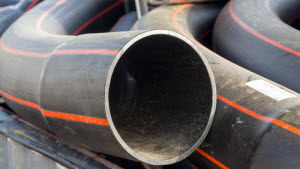It goes without saying that air plays a big role in our daily lives, both at home and at work. So it’s no surprise that indoor air quality (IAQ) is a major concern for workers across the country. IAQ can significantly affect the health, comfort, and productivity of your workers, so it’s important to make sure that the air is clean and comfortable.
Although it’s rare for poor IAQ to cause serious health problems, it’s not uncommon for employees to perceive the air as dangerous or unhealthy when the quality is low. In this post, we’ll help you to further understand exactly what poor IAQ is and how to improve the quality of the air inside your facility.
What’s Good IAQ?
Since breathing is an automatic action we do without much thought, good IAQ goes relatively unnoticed. However, the moment that dust, pollen, foul odors, or other pollutants enter the air, it’s noticed almost immediately. However, contaminants aren’t the only things that can lower the air’s quality. Air temperature, humidity, and even stillness can attribute to its overall quality.
To achieve good IAQ in your building, you need to focus on the following criteria: ventilation, temperature, humidity, volatile organic compound (VOC) emissions, cleaning, and maintenance.
What Are the Most Common IAQ Complaints?
Since most employers concentrate on providing a safe working environment, it should come as no surprise that the most common complaints concerning IAQ don’t involve pollutants but rather employee comfort. For instance, most complaints have to do with the temperature of the air being too hot or too cold. Following that is complaints about drafts or still air. The third most common complaints have to do with dry or humid air.
Serious health-related complaints, such as eye or throat irritation, dizziness, or nausea, are much rarer and typically hard to blame on the IAQ of the workplace unless the issues are persistent and felt by numerous employees. Sometimes, these symptoms can be brought on by allergies to mold or dust that may be present in the air.
What’s Causing My IAQ Problems?
To identify the cause of poor IAQ, you need to listen to the complaints. Still air can easily be improved by adding more ventilation. However, mold or mildew will need to be handled thoroughly by a professional cleaning team to ensure that the problem is resolved and possibly the inclusion of a contractor if this is a reoccurring problem due to some structural design issue.
So where exactly can you look to find the cause of your IAQ problems?
- Tobacco smoke
- Cleaning products
- Dust
- Malfunctioning HVAC unit
- Printers or copy machines
- Fragrances and cosmetics
- Pesticides
While most buildings will likely have a little bit of all these, they only really become a problem when levels accumulate faster than they can be ventilated.
How to Solve and Prevent Poor IAQ
Once you understand the source of your building’s poor IAQ, it’s fairly easy to correct the air quality problem. To prevent future instances, like in the case of mold or mildew, you can use materials around the office that are resistant to these factors. High-density polyethylene (HDPE), for example, is naturally resistant to mold, mildew, and bacteria. Plus, it has no VOC emissions, making it perfect for any workplace that wishes to improve the overall IAQ.


 We’ll gladly show you what makes HDPE sustainable and why you’d benefit greatly by using it in your next renovation or remodel project.
We’ll gladly show you what makes HDPE sustainable and why you’d benefit greatly by using it in your next renovation or remodel project. One of the biggest advantages that HDPE brings to your facility is through helping your air quality. HDPE is impervious to humidity and moisture, which can be abundant in areas like the restroom or locker rooms. Most plastic and metal partitions or storage compartments located in an environment with constant moisture will not only begin to wear, but they also run the risk of growing mold. Because of HDPE’s solid plastic construction, mold won’t find a way to grow, allowing HDPE to remain unaffected and helping to
One of the biggest advantages that HDPE brings to your facility is through helping your air quality. HDPE is impervious to humidity and moisture, which can be abundant in areas like the restroom or locker rooms. Most plastic and metal partitions or storage compartments located in an environment with constant moisture will not only begin to wear, but they also run the risk of growing mold. Because of HDPE’s solid plastic construction, mold won’t find a way to grow, allowing HDPE to remain unaffected and helping to 